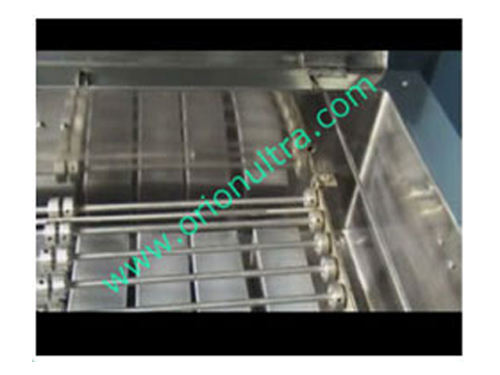
Spinnerets Cleaning System
Introduction: In the textile and fiber manufacturing industry, spinnerets play a crucial role in producing high-quality fibers. Spinnerets are specialized components that extrude molten polymer or fiber-forming material into fine filaments, which are then solidified to create fibers. Over time, spinnerets can become clogged or contaminated, affecting the quality and efficiency of fiber production. A spinnerets cleaning system is designed to remove deposits, residues, and impurities from spinnerets, ensuring optimal performance and consistent fiber quality. In this article, we will explore the importance of spinnerets cleaning, the cleaning methods used, and the benefits it brings to the fiber production process.
Importance of Spinnerets Cleaning: Regular cleaning of spinnerets is essential for the following reasons:
- 1.Preventing Clogging: Spinnerets can accumulate polymer build-up, contaminants, or foreign particles, leading to clogging. Clogged spinnerets result in uneven fiber formation, reduced fiber quality, and increased downtime for cleaning and maintenance.
- 2.Maintaining Fiber Quality: Clean spinnerets ensure the production of high-quality fibers with consistent diameter, shape, and surface properties. Removing deposits and impurities from spinnerets helps maintain uniform fiber properties, resulting in better performance and end-product quality.
- 3.Improving Productivity: Clean spinnerets promote smooth and continuous fiber extrusion, reducing interruptions and downtime. Regular cleaning minimizes the need for unscheduled maintenance, leading to improved productivity and increased production efficiency.
Cleaning Methods: Spinnerets cleaning systems employ various methods to effectively clean spinnerets:
- 1.Mechanical Cleaning: Mechanical cleaning involves physically scrubbing the spinnerets to remove deposits and contaminants. This method can use brushes, scraper tools, or air pressure to dislodge and remove accumulated materials. Mechanical cleaning is suitable for moderate levels of contamination and can be performed manually or with automated cleaning systems.
- 2.Chemical Cleaning: Chemical cleaning utilizes specialized cleaning agents or solvents to dissolve or break down polymer deposits and residues. The cleaning agents are chosen based on the type of polymer being processed and the nature of the contaminants. Chemical cleaning is effective in removing stubborn or hardened deposits and restoring spinneret performance.
- 3.Ultrasonic Cleaning: Ultrasonic cleaning employs high-frequency sound waves to create microscopic bubbles in a cleaning solution. The implosion of these bubbles generates intense cleaning action, dislodging and removing contaminants from the spinnerets' surfaces. Ultrasonic cleaning is particularly effective for cleaning intricate geometries and hard-to-reach areas of spinnerets.
- 4.Thermal Cleaning: Thermal cleaning utilizes controlled heat to remove polymer build-up from spinnerets. The spinnerets are subjected to elevated temperatures, which cause the polymer deposits to soften and detach. Thermal cleaning is commonly used for cleaning spinnerets with heat-resistant materials and polymers.
Benefits of Spinnerets Cleaning: Proper cleaning of spinnerets offers several benefits to the fiber production process:
- 1.Consistent Fiber Quality: Clean spinnerets ensure the production of fibers with uniform diameter, shape, and properties. Consistent fiber quality improves the performance and functionality of textile products, meeting the stringent requirements of various industries.
- 2.Increased Productivity: Regular spinnerets cleaning minimizes clogging and reduces downtime for cleaning and maintenance. The uninterrupted fiber extrusion process leads to improved productivity and efficiency in fiber production.
- 2.Increased Productivity: Regular spinnerets cleaning minimizes clogging and reduces downtime for cleaning and maintenance. The uninterrupted fiber extrusion process leads to improved productivity and efficiency in fiber production.
- 3.Extended Spinneret Lifespan: Proper cleaning and maintenance of spinnerets prolong their lifespan, reducing the need for frequent replacements. This results in cost savings and improved equipment utilization in the long run.
- 4.Enhanced Operational Efficiency: Clean spinnerets promote smooth and continuous fiber extrusion, reducing the frequency of process interruptions and equipment malfunctions. This leads to improved operational efficiency and streamlined production processes.
- 5.Cost Reduction: Efficient spinnerets cleaning helps reduce operational costs by minimizing fiber waste, optimizing energy consumption, and reducing maintenance expenses. It also contributes to the reduction of rejects and product rework, leading to overall cost savings.
